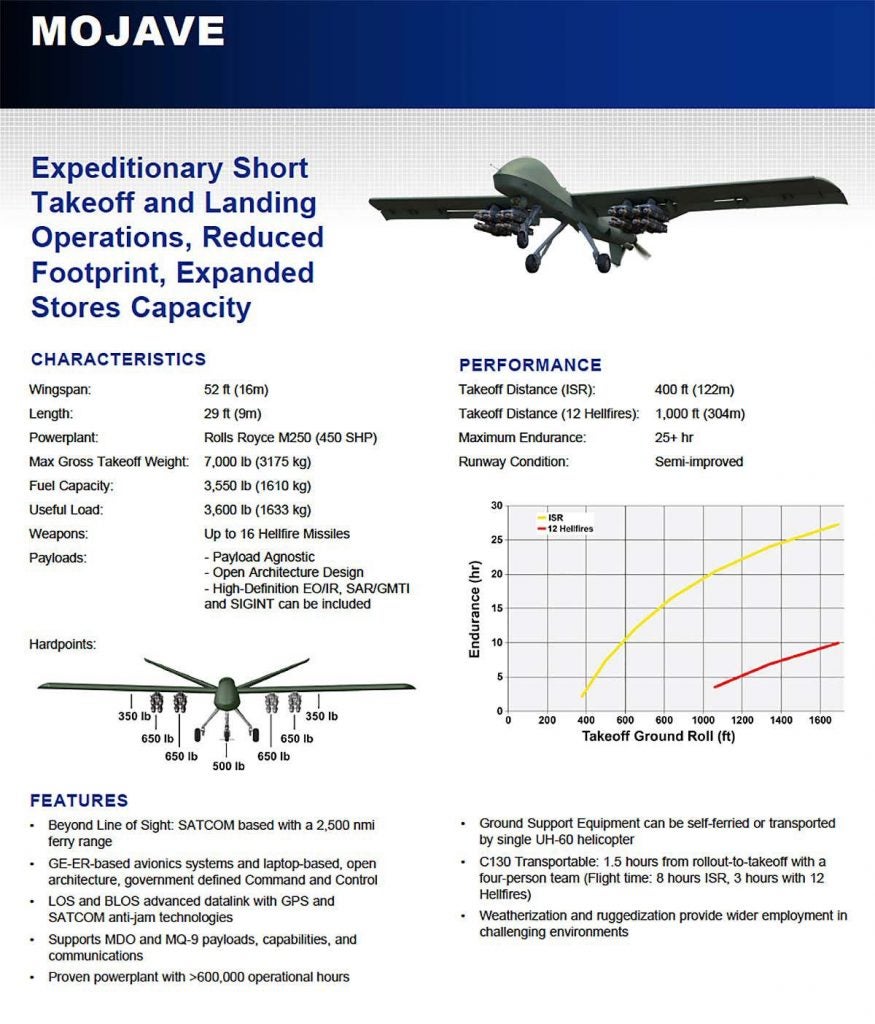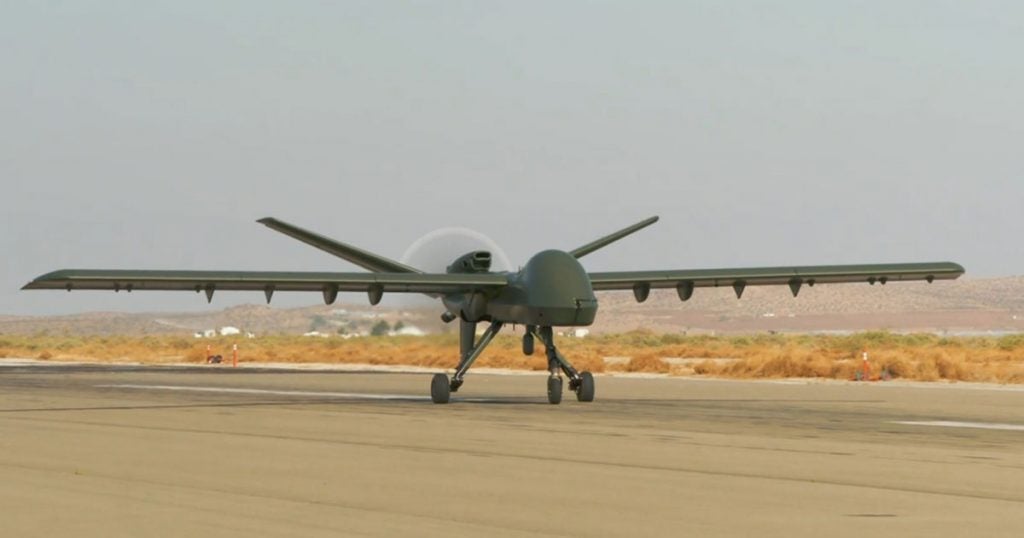General Atomics Unveils STOL-Capable Mojave UAV
General Atomics today unveiled its new Mojave unmanned aerial vehicle, designed for short-takeoff and landing capability and increased firepower.
While the Mojave’s avionics and flight control systems are based on those of the MQ-9 Reaper and MQ-1C Gray Eagle-ER, its enlarged wings and high-lift devices make it easily distinguishable from its predecessors. A 450-horsepower turboprop engine further aids its ability to conduct short takeoffs and landings, with a prototype Mojave that first flew this summer said to be already demonstrating “exceptional” short-field performance.

General Atomics’ choice in naming the Mojave after the harsh Mojave Desert reflects the company’s aim for the UCAV to operate from forward bases without typical airport runways or infrastructure, landing and taking off from unimproved surfaces without giving up its predecessors’ advantages in endurance and persistence compared to manned aircraft. The company says that the Mojave’s STOL capability could even facilitate operations from aircraft carriers, “unlocking” naval missions or sea-based support for special operations forces among other tasks. This, General Atomic says, makes Mojave the “perfect” unmanned aerial vehicle for armed overwatch, attack and armed reconnaissance missions.
The Mojave has a payload capacity of 3,600 pounds, and can carry up to 16 Hellfire missiles or their equivalents. Sensors that can be equipped on the Mojave include Electro-optical/Infrared (EO/IR), Synthetic Aperture Radar/Ground Moving Target Indicator (SAR/GMTI) and Signal Intelligence (SIGINT) payloads, supporting land and maritime missions alike.

“We’re proud to bring these extraordinary capabilities to our Predator line of UAS,” said GA-ASI CEO Linden Blue. “We are providing the ground force with a long-endurance, armed overwatch UAS that can quickly reload weapons at austere sites, located close to the conflict zone. This revolutionary design, based on 7 million flight hours of UAS experience, increases expeditionary employment options – making Mojave a real game changer.”

